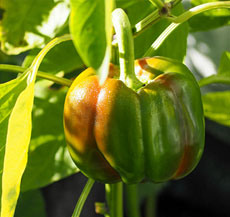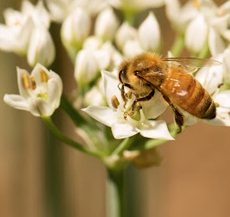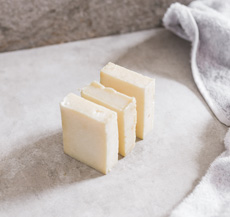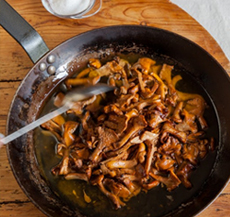Fall Favorites
With crunchy leaves underfoot and a distinct nip in the air, the wonderful season of autumn is one of our favorites, especially thanks to the beautiful bounty of produce that is now coming in from the Bella Luna gardens and orchards.
Crisp-crunchy apples. Mellow-sweet pears. Vibrant squash, foraged mushrooms and hearty kale. These colorful fall staples are re-inspiring us to get back in the kitchen, as we have been spending more and more of our hours at the stove experimenting with new recipes and rediscovering old favorites. We’re busy taking notes, too, as we plan ahead for a new series of classes and workshops here at the farm (more info soon!), but in the meantime, we invite you to cozy up, put on an apron and also get cookin’ with this round-up of beloved seasonal recipes. To fall!
Starters, Snacks & Salads
Beet, Cheddar & Apple Tarts
Thinly-sliced beets add beautiful color to these appetizer-sized tarts from Martha Stewart.
Kale Salad with Root Vegetables & Apple
Packed with crisp carrots, rutabagas and kale, this super-healthy salad from Food & Wine is incredibly refreshing.
Blue Cheese-Stuffed Roasted Pears with Arugula
Roasted and topped with cranberries, hazelnuts and blue cheese, these pears from the Barefoot Contessa are incredibly flavorful.
Veg Out!
Brown Butter Kale
This Tom Douglas recipe combines quality ingredients to bring out the inherently nutty flavor of this protein-rich green.
Savory Roasted Squash, Two Ways
After roasting, this side is topped with either fresh thyme, honey and walnuts, or hazelnuts and blue cheese, for a spectacular finish.
Stars of the Show
Butternut Squash Bisque
Creamy and supremely satisfying, this butternut squash-based soup is spiced with cinnamon, cayenne and thyme.
Chanterelle Mushroom Risotto
Creamy and delicious, this recipe is a favorite here at the farm—just remember to stir!
Sweet Dreams
Honey-Poached Pears with Crème Fraîche
This lovely, light dessert from Bon Appetit uses honey to draw out the mellow sweetness of fall pears.
Maple-Spiced Apples
These fragrant apples are wonderful served on top of pancakes or waffles.
Preserving Summer
After a beautifully-sunny summer, the mornings are now sometimes dawning crisp and cool and the farm is bustling with activity as we pick, pluck and harvest the summer garden vegetables and berries, plus the earliest pears and apples.
Once off vine and tree, this bounty makes its way to the farm kitchen, where we spend days and evenings crafting them into jams and preserves. In addition to berry and fruit preserves, our ‘jam sessions’, so to speak, include pickling vegetables such as cucumbers, cauliflower and onions, as well as crafting savory relishes from beets and corn. We also can many a fruit chutney (peach is a favorite) and whip up small batches of our Nonna Pat’s famous tomato sauce with vine-ripened tomatoes plucked fresh from the garden. (Another use for those beautiful summer tomatoes? The roast tomato ketchup recipe below!)
In all, we will stow over a thousand jars, sure to be beautiful reminders of glorious, sun-kissed summer during the cold winter months that will arrive all too soon.
Roast Tomato Ketchup
Ingredients:
4½ pounds tomatoes
3 teaspoons sea salt
1 bunch fresh thyme, leaves stripped from stems
2 tablespoons olive oil
1 onion, chopped
1 teaspoon allspice berries
½ teaspoon whole cloves
½ teaspoon black peppercorns
1½ cups sugar
1 teaspoon dry mustard
2 cups cider vinegar
Method:
1. Preheat oven to 300°.
2. Cut the tomatoes in half and arrange cut-side up on a roasting pan. Sprinkle with 2 teaspoons of the salt and all the thyme leaves and drizzle with 1 tablespoon of the oil. Roast in the oven for 1½ hours.
3. Heat the remaining tablespoon of oil in a large saucepan over medium heat, add the onion, and sauté until golden, about 10 minutes.
4. Put the allspice, clove and peppercorns in a spice grinder and grind to a powder. (You can also do this with a very sharp knife or by using a mortar and pestle.) Add spices to the onion and cook for 1 minute. Add the roasted tomatoes, sugar, mustard powder, vinegar and remaining 1 teaspoon salt and bring to a boil. Adjust the heat to a steady low bowl and cook for 30 minutes, uncovered, stirring occasionally.
5. Blend to a thick sauce using a food processor or handheld blender. Pour into sterilized bottles and seal. Ketchup will keep up to 1 year stored in a cool, dry place.
Recipes courtesy of Homegrown Harvest.
Time to Jam
Summer is fruit season here in the Northwest, a glorious moment in time when we start to (literally) enjoy the fruits of our labors as a wide range of luscious, juicy berries ripen—from the organic Tulameen raspberries grown in our gardens to wild blackberries and sweet blueberries.
Our berries are lovingly hand-picked each morning during this season. Some go straight into our mouths for a delightful snack, others are destined for fresh fruit crisps. But, without fail, we also tuck away a supply for our housemade jam, which captures the wonderful, fresh flavors of summer for months to come. This month, it’s the juicy and ripe Tulameen raspberries that are headed for our jars.
The process is simple, with just a few quality ingredients included in our ‘uncooked’ recipe: organic fruit, organic sugar and pectin. That’s it. A quick stir and into the freezer it goes—and believe us, nothing beats pulling out a dollop in deep, dark winter to brighten up morning toast or to serve alongside freshly-baked scones.
Bee Happy
With the arrival of beautiful blooms and warmer temperatures, our native pollinators—namely the Orchard Mason bees and honey bees—are now busy, busy, busy collecting pollen and nectar. Here at the farm we help foster these bee communities in two separate ways:
First up, Mason Bees make their homes in tiny holes in tree trunks, reeds, natural small nooks, or in man-made structures like our new specialized Orchard Mason bee houses which were installed by Dave and Beth Richards of Woodinville’s JohnnyAppleBeez in sunny, south-facing spots here at the farm to help with crop pollination. These handmade cedar houses are filled with reed tubes that mimic the bees’ natural nesting spots. These busy, non-stinging bees are considered nature’s ‘super’ pollinators – pollinating up to more than eighty times as many flowers as honeybees do as they can work in cooler temperatures and start flying earlier in the spring, and are a welcome addition to the farm!
Then, the honey bees in our dedicated apiary are also abuzz with activity this spring, traveling from flower to flower to make honey to feed the brood in the hives. Honey bees form large organized colonies, or hives, usually in hollow tree trunks in the wild, which can contain as many as seventy-five thousand bees. The wooden bee hives we keep in the apiary usually contain around forty- to fifty-thousand female worker bees, and a single queen who lays all of the eggs to produce the young. These hives would look mighty familiar, as they are the same wood boxes that we use for our weekly deliveries! Stacked on top of each other, each two-box hive holds ten frames hanging from the inside lip of the box. This is where the bees make wax comb, store honey and pollen, and raise their young. In the spring we add extra shallower boxes to the tops of the hives, called supers, which is where the bees will store extra honey for winter; this is the honey that we can harvest from the hives.
Working from dawn to dusk, our honey bees are true ‘sun-seekers’, unable to fly in the rain, or if it’s too cold. However, on nice days, they might travel as far as five miles to collect food. Here in Western Washington their main food sources for pollen and nectar are Bigleaf maple flowers, dandelions and salmon berry flowers in the spring, and then fireweed and blackberries in late summer.
We love seeing the busy Mason and honey bees buzzing on by—they are vital to the life cycle of the gardens and orchard, and to the food they help produce!




